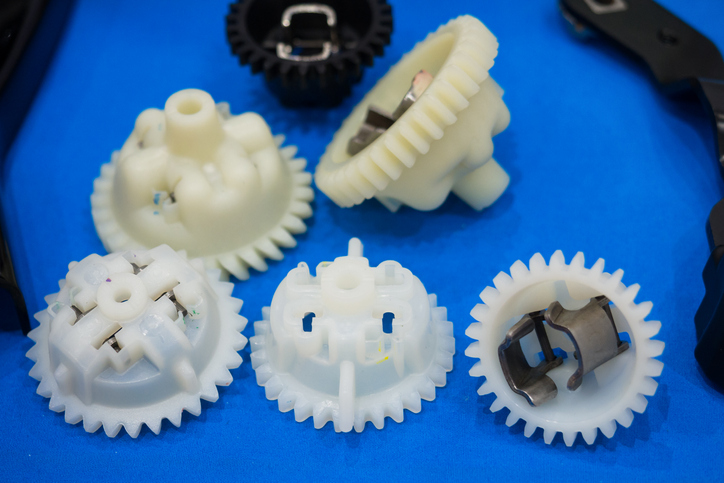As advancements are made across sophisticated industries, like medicine and aerospace, the requirements for tighter tolerances on plastic components have become increasingly necessary. Tight tolerance can mean something different depending on the molder, but it is generally recognized as ± 0.002 inches, and very tight tolerance is ± 0.001 inches.
Part complexity, material, manufacturing processes, and tooling all impact the tolerances that can be achieved. High-performance plastics offer many valuable benefits for complex and critical products that face harsh environments. Many of these resins excel at maintaining tight tolerances, even at high temperatures. High-performance plastics are excellent candidates for machining after molding, which allows the tightest tolerances to be achieved.
Finish Your Parts Correctly: Advanced manufacturing processes are often required to get the part or subassembly to the stage needed by the end user.
Benefits of Tight Tolerances
Quite simply, parts with proper tolerances will fit as they should, whether snapping, sliding, or pressing the parts together. Not all parts require tight tolerances, and finding the tolerance best suited for your application is important.
Tight tolerances are usually required for complex or critical parts, especially those used in higher-risk applications, such as for the medical or aerospace industries. Underperformance or part failure may occur if the tolerance is not met, which could have catastrophic results. For these parts, tight tolerance means fewer rejects and failures, and problems with mating during assembly can be avoided. In the long run, achieving the tolerances required for your part saves you time and money.
The tight tolerances that can be achieved with high-performance plastics have allowed parts to be transitioned from metal. This has been crucial in the aerospace industry as engineers look to reduce weight to increase fuel efficiency and reduce emissions. In the oil and gas industry, components like bearings that generally experience extreme wear hold their tolerances because of the high-performance plastics’ low coefficient of friction.
Achieving tight tolerances involves using advanced tooling and sometimes secondary operations that can add costs to the project. Requiring tight tolerances for every project doesn’t make sense, but it is worth the extra investment for those where tight tolerance is critical.
Critical Solutions for an Essential Industry: Plastic semiconductor production components are critical in keeping this essential industry on track.
Tight Tolerance Design Considerations
When designing any part, including a plus and minus tolerance for every dimension is critical because, without a tolerance, the manufacturer won’t understand the importance of that dimension. Injection molds for products not requiring tight tolerances are typically machined to a tolerance of ± 0.005. For some products, being off as little as ±0.004 may lead to parts not fitting as they should. For tight tolerance dimensions, providing a plus and minus tolerance should be a given. With that said, tolerances should be as large as possible while allowing the fit and functionality of the part to be maintained.
The designer should work closely with the injection molder during the design phase to develop a manufacturing process that will allow the product to meet fit and functionality specifications. Employing design for manufacturability (DFM) principles and conducting mold flow simulation during the design phase will help ensure tight tolerances can be met. The team can evaluate the problems in part geometry that may require special mold features. For example, undercuts may require a side cam for removal.
During the evaluation, the team may decide that certain features, such as gates, gate locations, weld line locations, runners, etc., must be changed to produce a part that meets your tolerance requirements. Your injection molder will also know if specific processes might impact tolerance and how to mitigate any negative impacts.
The resin chosen will also impact tolerance. The shrinkage rates vary between plastic materials (amorphous generally demonstrating less shrinkage than crystalline); therefore, the tolerances they can hold also vary. A higher shrink rate usually means that keeping a tolerance is less repeatable. Finding the material that has the qualities you need and can hold the tolerances you need may require a trade-off between which is most important. An experienced molder of high-performance plastics can help you find a balance. Sometimes fillers may need to be added to decrease the rate of shrinkage.
Pitfalls to Avoid When Transferring Tooling: Explore our free ebook to learn what to avoid when transferring tooling to a different partner, including a handy checklist.
Experience with Tight-Tolerance, High-performance Components
Ensinger Precision Components has the experience, knowledge, and capabilities to transform your vision for your tight-tolerance, high-performance part into a reality. We will work with you on part design, material selection, and design for manufacturability analysis, applying our 80 years of injection molding experience to ensure we meet your specifications. And because tight tolerances are not always achievable with injection molding alone, we have cobot-operated CNC machining capabilities that allow us to achieve the tightest tolerance requirements.
Speak to one of our experts today to get started on your next tight tolerance project.
